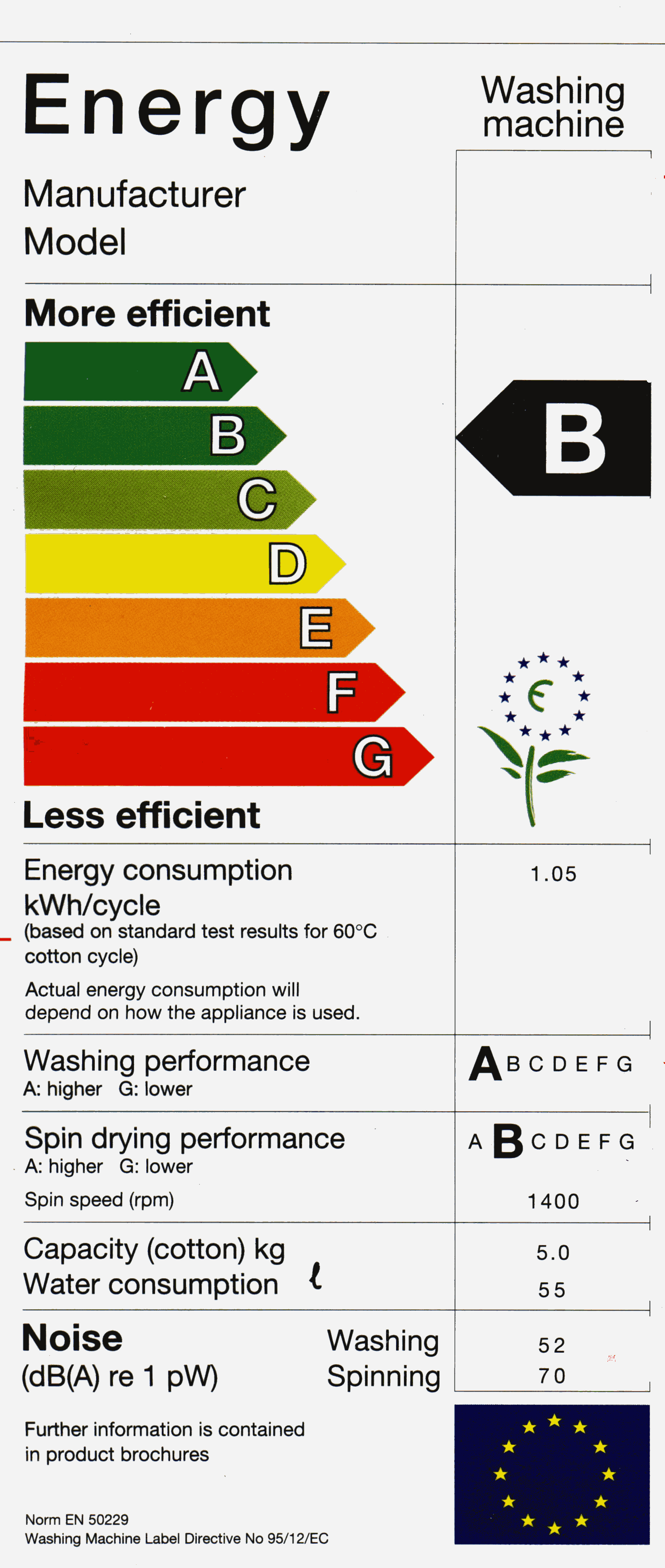| Washing Machines | |

|
European labelling is being introduced for a range of consumer items. Fridge's,freezers and washing machines are already included. This diagram illustrates the detail for a washing machine. Manufacturer's name and product details; This confirms the manufacturer's name and model number- check that this is the same as the model you actually choose to buy. The European Ecolabel Some products have been awarded the European ecolabel (see illustrated logo) which may appear on the label or elsewhere. The ecolabel indicates that the product has been independently assessed and found to meet strict environmental criteria, putting it among the best in its class. How well does it perform? The 'A-G' indicators here are similar to the main energy efficiency ratings andare based on standard industry tests (the test cycle used is on the label):'A' is the best performance and 'G' is the worst performance. A washing machine that has a good spin drying performance will save you money and time on tumble-drying. Water consumption, Capacity, and other information A range of other informationmay be provided here to help you choose the best appliance for your own needs. You might, for example, want to find a washing machine that uses less water. |
|
Task 7: a) Use the water consumption information to work out how much water and, if your water is metered, how much cash you would save each year by choosing a low-consumption machine. For example, choosing a machine that uses 60 litres per wash rather than 80 litres per wash will save you over 5800 litres of water a year-roughly the amount we each use every six weeks. b) Calculate the amount of water consumed and carbon dioxide released each year from the washing machine label above if the machine is used three times a week. | |
|
Manufacturers don't have to provide information on noise but if they do so, you can use this to choose quieter models. A lower number shown here simply means that the appliance emits less noise. | |